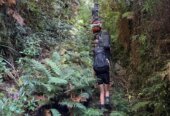
Image via Peter Clarke
It’s been an interesting fortnight since my last offering to this august journal. The first week involved working the full four days at Fieldays and the following week involved a nervous wait for, and execution, of a double cataract operation.
So, this comes to you with my pecking at a keyboard complete with very dark glasses impersonating one of the Blues Brothers… but not earning their money!
A Fieldays clear of cold, foggy Winter mornings was something board members (including myself) had hankered for over several years. Traditionally the annual event was aligned with the ‘quiet’ part of the dairy farm calendar until the pandemic created (or caused) major change. But in keeping faith with the large number of exhibitors the Fieldays Society attempted an early summer offering. The public, with the agricultural fraternity busy with double milking and silage preparation, spoke out by staying on the land. Interestingly the smaller crowd gave the exhibitors more quality time with their clients – prospective or actual – but essentially many visitors were feeling the financial pinch in the pocket.
So turning to the second week I followed up on the recommendation of the optometrist and the eye surgeon to ‘do the double’ and permit the creation of new eye lenses preceded by the destruction of both cataracts. As I write (or rather struggle to tap this due to the aforementioned dark glasses) I have to admit that just three days after the fairly short, side by side, operations the vision is greatly improved.
The late Fred Hollows, having been brought up in the Manawatū, initially set off to be trained as a minister of the church but, after a student holiday job in a mental facility, changed to study medicine in general and ocular matters in particular. By this time, he was in Australia and later the United Kingdom educating himself in a high degree of medical vision support. He also had a love for scaling rocks in high places – including in Nepal – and was, for a period, a close friend of Sir Edmund Hillary. His introduction to socio-economically depleted Nepal and other similar countries took him to persuading manufacturers of intraocular lenses in those areas to do so at a minimal cost. It enabled him to start the main thrust of his career improving the sight of people in deprived regions.
The resultant Fred Hollows Foundation is an excellent reminder of Dr Hollows’ magnificent work which came to an end when he died in 1993. I knew little of the detail but my brush with defective sight caused me to read up on that fine man whose dedication and skills are treasured by many thousands of people around the world.
Sight – along with hearing, smell and touch – are birth-given skills that we too often take for granted.
The smell of a blooming flower, the bouquet of a shiraz and the touch of a hand on one’s cheek are to be treasured. Should any one of them be frustrated for any reason we fret and miss them terribly.
See you all in the New Year – the essence of a good Christmas with your family is arriving there safely. Take care.








